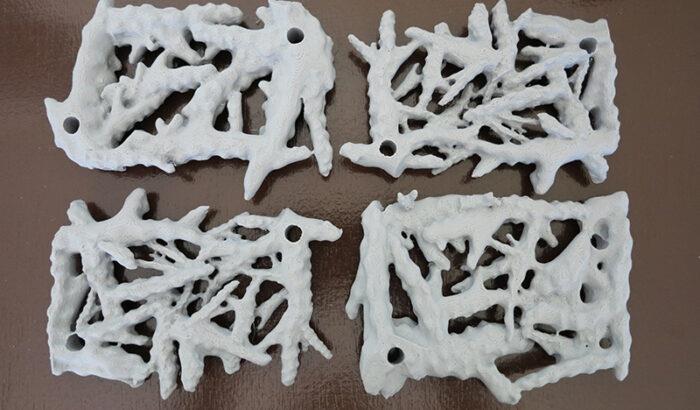
New tech uncovers the hidden life of 'dead' coral reefs
by Dr Kenny Wolfe 6 Sep 2020 12:42 UTC

RUbble Biodiversity Samplers (RUBS) are lightweight 3D-printed models that provide a standardised unit to monitor biodiversity in coral rubble habitat © Dr Kenny Wolfe
A new study suggests 'dead' coral rubble can still sustain life, with a large number of tiny animals hidden and living amongst the ruins.
While the study does not suggest dead coral has the same or higher function as a live coral reef, it suggests reef rubble habitat is not as desolate, unattractive and 'dead' as is commonly assumed.
"When people think of coral reefs, they often think of larger invertebrates that are easily found, such as sea cucumbers, starfish and giant clams," said lead author Dr Kenny Wolfe from the ARC Centre of Excellence for Coral Reef Studies at The University of Queensland.
"But interestingly, dead coral rubble supports more of what we call 'cryptic' animals."
Cryptic animals are 'hidden' creatures, including tiny crabs, fishes, snails and worms—all of which hide in the nooks and crannies of the reef to avoid predation.
"And just like on land with small insects and bugs, biodiversity in the sea can be dominated by these tiny invertebrates," Dr Wolfe said.
As these creatures try to remain hidden, finding and surveying them requires particular care and attention.
Dr Wolfe teamed up with UQ Innovate to design 3D-printed coral stacks called RUBS (RUbble Biodiversity Samplers), to survey cryptic animals on coral reefs.
The 3D-printed 'coral' mimics the surrounding reef rubble, seamlessly inviting hidden reef organisms to be unknowingly monitored.
"Every piece of coral or rubble is different," Dr Wolfe said.
RUBS provide a uniform method to survey the hidden majority on coral reefs. By sampling the RUBS' structures over time, the team were able to identify changes in the cryptic population, adding pieces to the puzzle and filling in the unknowns of coral reef food webs.
"This data fills important knowledge gaps, such as how small cryptic animals support coral reefs from the bottom of the food chain, all the way up to bigger predators," Dr Wolfe said.
He believes the new technique is another step in better understanding our precious reefs—whether 'alive' or 'dead'.
"These are important habitats, which support coral reef biodiversity and important food webs," Dr Wolfe said.
"This new technology is a new opportunity for reef management, particularly for reef education and awareness. We're excited to learn about and celebrate the diversity of life in this misunderstood habitat."
Paper
Wolfe K, Mumby P. (2020). 'RUbble Biodiversity Samplers: 3D-printed coral models to standardize biodiversity censuses'. Methods in Ecology and Evolution. DOI: 10.1111/2041-210X.13462.